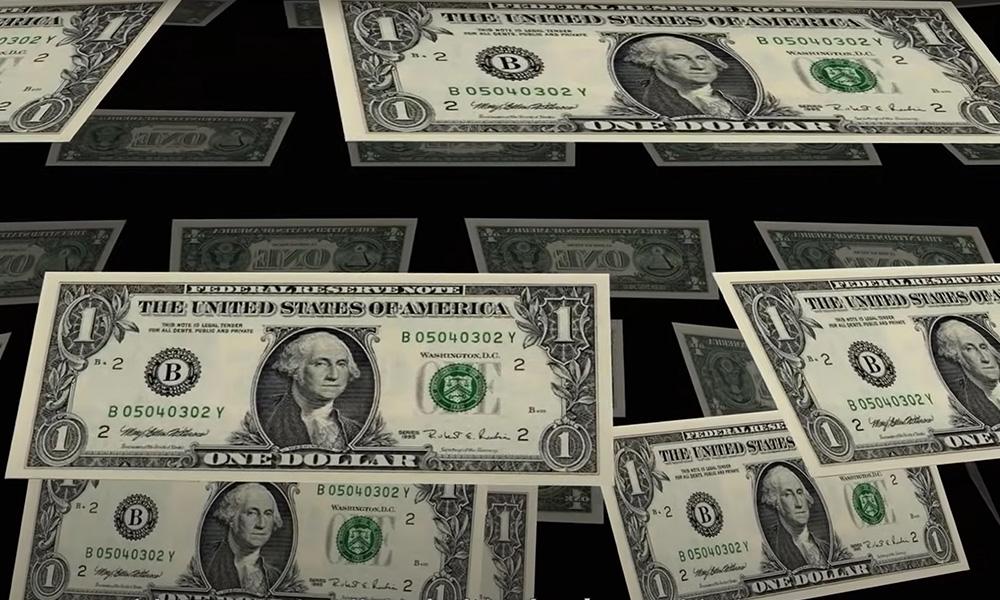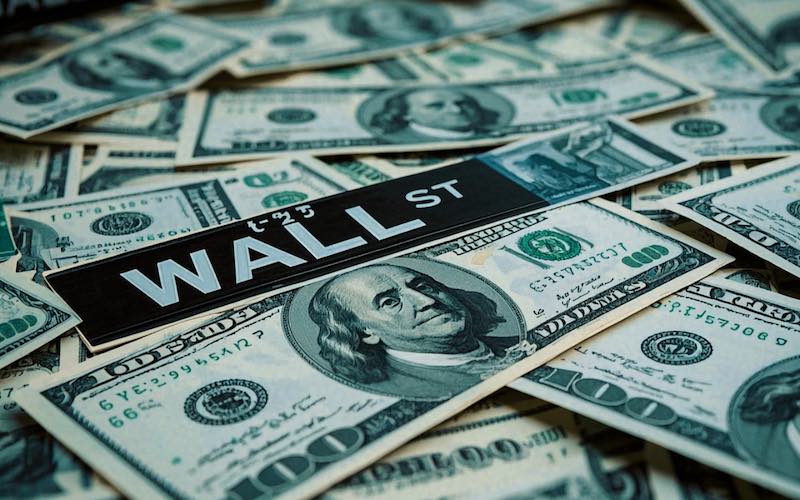Trump's tariffs hit on August 1st: How much have South Korea, Japan, and the EU paid in "protection fees"? Did the money earned in previous years go to waste?
2025-08-01 09:47:25

On July 31st, Trump signed an executive order announcing new tariff rates on numerous countries worldwide, effective August 1st! The tariff and investment commitments targeting South Korea, Japan, and the European Union are particularly noteworthy:
South Korea: 15% tariff (down from the 25% threatened in April), pledge to invest $350 billion and purchase $100 billion of U.S. energy.
Japan: 15% tariff (lower than the 24% threatened in April), pledge to invest $550 billion, and open markets for automobiles, rice, etc.
EU: 15% tariff (lower than the 30% threatened in April), commitment to purchase $750 billion in U.S. energy + an additional $600 billion in investment.
Other countries: Canada 35%, Brazil 50%, Mexico 30%... The trade war is full of gunpowder!
Background: Trump has targeted traditional allies like South Korea, Japan, and the European Union, citing the trade deficit. According to the U.S. Department of Commerce, the U.S. trade deficit is projected to reach $1.2 trillion in 2024, with surpluses with South Korea, Japan, and the European Union accounting for the lion's share.
Why have South Korea, Japan and Europe become “key targets”?
South Korea: In 2024, it will export 34.7 billion US dollars of automobiles, semiconductors, etc. to the United States, accounting for 44% of its GDP!
Japan: In 2024, exports to the United States will reach US$145.7 billion, with automobiles and electronic products being the main products, and the trade surplus will be approximately US$69.4 billion.
EU: The trade surplus with the US will exceed 150 billion euros in 2023, with German cars and French luxury goods making significant contributions.
Tips: Trump’s tariff wave is not only an “economic war” but also a “political show”, and allies have to pay “protection fees”!
Investment commitments from South Korea, Japan, and Europe: sky-high “protection fees” or strategic deployment?
How much did South Korea, Japan and Europe pay?
Trump's tariff threats have forced South Korea, Japan, and Europe to bleed:
South Korea: Committed to US$350 billion in investment (semiconductors, energy, shipbuilding) + US$100 billion in purchases of US liquefied natural gas (LNG).
Japan: Committed $550 billion in investments (automobiles, energy, infrastructure), including support for the Alaska LNG project.
EU: Committed to $600 billion in investment (energy, manufacturing) + $750 billion in purchases of US energy, plus increased defense spending to 5% of GDP.
Data point: In 2024, South Korea, Japan, and the European Union's total exports to the US will be approximately $465 billion, of which South Korea and Japan account for 60% ($280 billion). These investment commitments are almost equivalent to the combined surpluses they have run with the US in recent years!
How valuable is the investment commitment?
These sky-high promises may seem intimidating, but will South Korea, Japan, and Europe really lose everything? Let's break it down:
South Korea: The $350 billion investment primarily targets semiconductor and electric vehicle factory expansions (e.g., Samsung's $17 billion investment in Texas). This isn't a free gift, but rather a long-term strategic investment. The $100 billion LNG purchase diversifies South Korea's energy import sources and reduces its reliance on the Middle East.
Japan: The $550 billion investment includes Toyota and Honda building factories in the US, with some of the funds already planned (e.g., $17 billion in 2023). The Alaska LNG project will contribute to Japan's energy security.
EU: The $600 billion investment is mostly for German automakers (such as Volkswagen and BMW) to expand production in the United States, while the $750 billion in energy purchases will lock in long-term supply and stabilize the supply chain.
Experts say: JP Morgan analyst Michael Feroli said the investment commitments are "more of a repackaging of existing plans than new spending" and actual execution may be compromised.
Did they really "give back all the money they earned in previous years"? The truth revealed! How much did South Korea, Japan, and Europe earn in the past?
Over the past decade, South Korea, Japan, and Europe have made huge profits from exports to the United States:
South Korea: From 2011 to 2024, the cumulative surplus in automobile and semiconductor exports was approximately US$200 billion, and automobiles alone generated US$17 billion in revenue in 2024.
Japan: The trade surplus with the United States will be about US$50-70 billion per year in 2023-2024, with automobiles and electronics accounting for the majority.
European Union: The trade surplus in goods with the United States will exceed 150 billion euros in 2023, with automobiles, luxury goods and machinery being the main products.
Data point: South Korea, Japan and Europe are highly dependent on the US market for their exports. In 2024, the total value of their goods imported by the US will reach US$465 billion!
Investment commitment = “working for nothing”? It’s not that simple!
Trump's tariff and investment promises have put immense pressure on South Korea, Japan, and the EU, but the idea of "spitting it all back" is a bit of an exaggeration:
South Korea: A 15% tariff squeezes export profits. While the $350 billion investment may seem like a stratospheric price tag, it's largely a long-term investment (Samsung, for example, has invested over $40 billion in the US from 2021-2024). South Korea is also mitigating the impact of tariffs by building a US factory (to produce 700,000 vehicles by 2024), and the profits haven't been fully recouped.
Japan: The 15% tariff is lower than the initially threatened 24%. Part of the $550 billion investment is already planned (for example, Toyota's $8 billion investment in the US by 2023). Japan also secured access to the US market and relaxed regulations on rice exports, which remains profitable in the long run.
EU: While 15% tariffs have a significant impact on automobiles and luxury goods, the $600 billion investment primarily involves German automakers expanding production in the US, while $750 billion in energy purchases secure long-term supply chains. The EU is also diversifying its risk by deepening cooperation with Japan and South Korea, such as in the RCEP negotiations.
Tips: These investments are not “gifts for free”, but strategic “safety purchases”, while also helping South Korea, Japan, and Europe gain more initiative in the US market and global supply chain!
How can South Korea, Japan, and Europe break through? Analysis of future trends
South Korea, Japan, and Europe's "self-rescue" strategies
Facing Trump's "tariff stick", South Korea, Japan and Europe actively responded:
Localized production: South Korea's Hyundai, Japan's Toyota, and Germany's Volkswagen are accelerating the construction of factories in the United States. By 2024, South Korea and Japan will produce more than 2 million vehicles in the United States, reducing tariff costs.
Market diversification: South Korea, Japan and China restarted negotiations on a trilateral free trade agreement, and the EU strengthened trade cooperation with Vietnam and India to reduce its dependence on the United States.
Regional integration: East Asia is promoting RCEP, and the EU plans to eliminate internal market barriers and build a more resilient economic circle.
Long-term trends: a new global economic landscape
The rise of East Asia: Accelerated trilateral cooperation among China, Japan, and South Korea may weaken the US market dominance.
EU self-reliance: The EU strengthens its economic resilience through single market integration and investment in the United States.
Global division: The tariff war may accelerate economic "decoupling" and form three major economic circles: the United States, China, and Europe.
A small reminder: South Korea, Japan and Europe can "pay protection fees" in the short term in exchange for peace, but they can still maintain their competitiveness in the long term through strategic adjustments!
In conclusion: South Korea, Japan and Europe are not that miserable, and the future is promising!
Trump's August 1st tariffs have South Korea, Japan, and the European Union (EU) on edge. While the $350 billion, $550 billion, and $600 billion in investment pledges may seem painful, they are by no means free work! These countries have adopted self-help strategies such as localized production, market diversification, and regional cooperation, not only mitigating the impact of tariffs but also paving the way for long-term development. While short-term profits may be squeezed, in the long run, South Korea, Japan, and the EU remain remarkably competitive globally.
Feel free to leave a comment: Do you think this wave of "protection money" from South Korea, Japan, and Europe is worth it? Who will have the last laugh in the future?
Disclaimer: This article is market analysis only and does not constitute any investment advice. Investing involves risk, so proceed with caution!
Source: Original article from the official account
- Risk Warning and Disclaimer
- The market involves risk, and trading may not be suitable for all investors. This article is for reference only and does not constitute personal investment advice, nor does it take into account certain users’ specific investment objectives, financial situation, or other needs. Any investment decisions made based on this information are at your own risk.





















